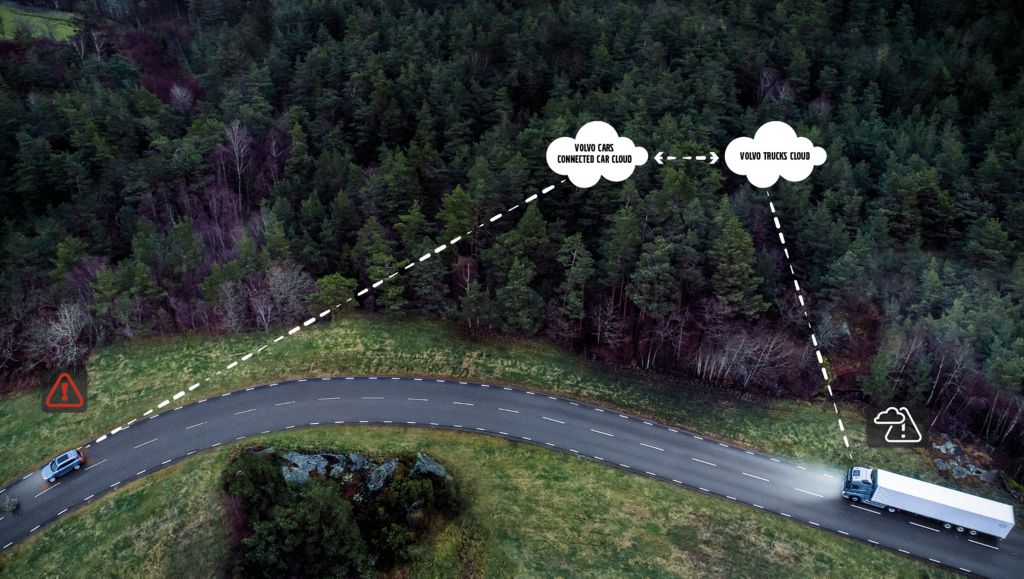Connected safety


To avoid accidents, it’s essential to react to hazards in time. Connected Safety, a new cloud-to-cloud technology being introduced in Volvo trucks, is designed to warn drivers of an upcoming danger early, by giving approaching drivers a 30-second heads-up before they reach a hazard. The warning allows the driver to slow down and manoeuvre their vehicle out of danger.
Carl Johan Almqvist, Traffic & Product Safety Director at Volvo Trucks, sees the technology as a milestone. “Cloud-to-cloud communication is the next big step in safety. By alerting drivers to hazards early, the Connected Safety system can help reduce risks in many life-threatening situations, such as when a vehicle needs to stop unexpectedly on a busy road, due to problems such as a flat tyre, a collision with a deer or a traffic pile-up.”
First developed and tested by Volvo Cars, the Connected Safety technology is being adopted by Volvo Trucks as the result of a one-of-a-kind collaboration between the two manufacturers. The launch will be followed by a broader market introduction.
“This is just the beginning,” says Emanuele Piga, Director Customer Solutions & New Services Development at Volvo Trucks. “As more vehicles have the technology installed and it becomes more sophisticated, the technology can be used to notify drivers of a broad range of potential hazards.”
Outgoing message
The driver of a vehicle is forced to stop unexpectedly and presses the hazard warning button. The Connected Safety system marks the location with the help of GPS. An encrypted, anonymous signal that spans 500 m is sent out through The Cloud to the surrounding area.
Incoming message
A vehicle scans its environment and picks up information about the location of the upcoming hazard. Between 300-500 metres away (depending on the speed of the vehicle) the driver is alerted to the hazard through a pop-up warning on the vehicle’s Secondary Information Display. The notification is stored and available in the Secondary Information Display until the driver has passed the hazard.
The platform
Connected Safety technology makes use of wireless cloud-to-cloud communication to warn vehicles about upcoming hazards. Volvo Cars was the first to adopt and test the technology, and now Volvo Trucks is next. The system will be available in Sweden and Norway during 2018. Connected Safety is applicable to Volvo FH, Volvo FH 16, Volvo FM and Volvo FMX equipped with Volvo Trucks’ integrated system for services and infotainment, depending on the truck’s specification and choice of services. In order to display the hazard warnings, the technology is restricted to vehicles with a multimedia package and a Secondary Information Display. Roll-out in other markets will follow.
A big win for safety
Like the three-point safety belt, the Connected Safety technology is being made available to other manufacturers as a way to increase road safety for all road users. The fact that truck drivers will now be part of the system is a big win for everyone, says Carl Johan Almqvist, Traffic & Product Safety Director at Volvo Trucks. “As professional drivers, they are often more aware of hazards and can help warn others. That makes the roads safer for everyone.”